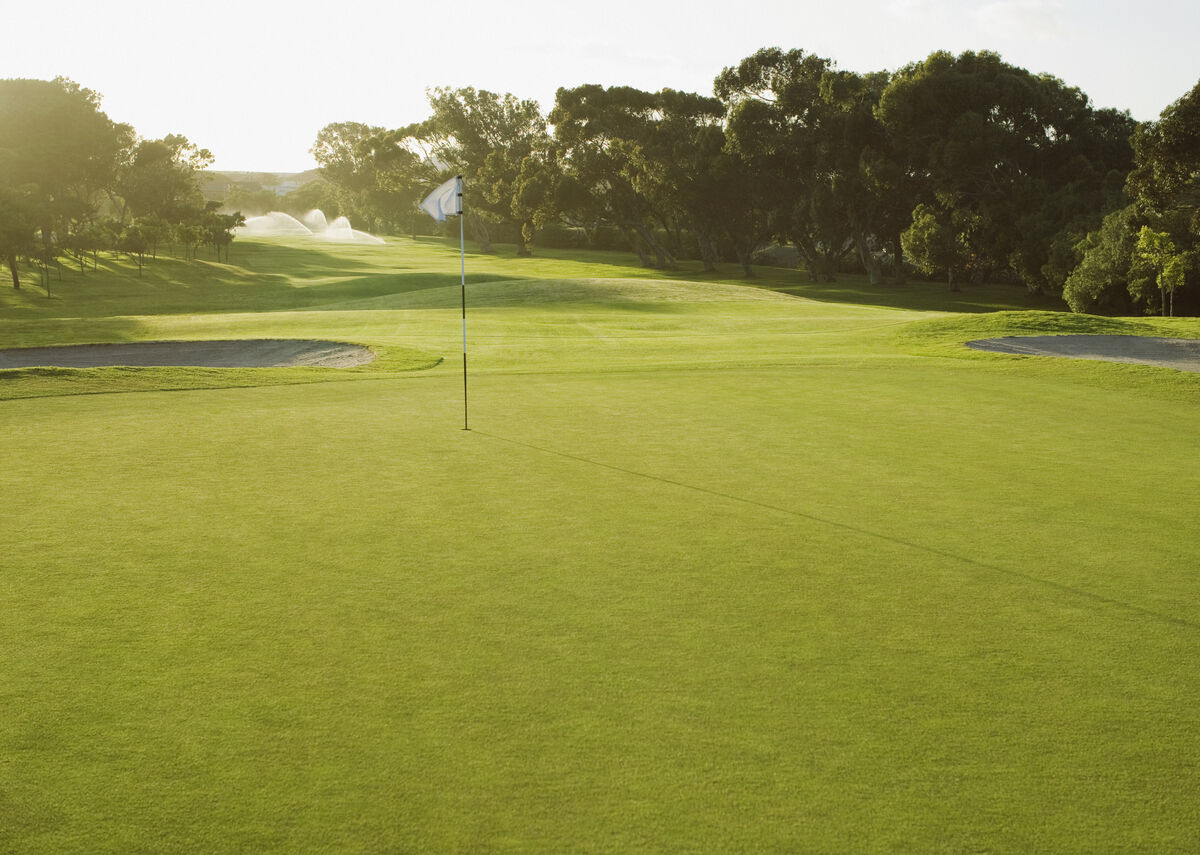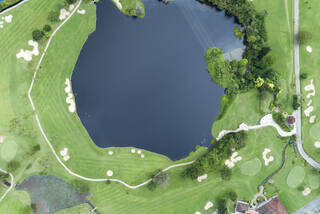How to Attack a Front Pin Location

Golf green with the hole cut in the front, protected by a bunker
You’ve got a scoring opportunity and the hole is cut on the front of the green. Fortunately, Mark Blackburn, Golf Digest Top 50 Teacher, has you covered. Here’s how to attack a front pin location and give yourself the best chance at birdie.
Simple Adjustments for Attacking a Front Hole Location
When the hole is cut in the front of the green, you need to launch the ball higher to get it to land more softly. To do this, use your most-lofted club that delivers enough distance to get there. You can move the ball forward in your stance fractionally to get even a little more loft, and higher launch, on the shot, just be sure you maintain your shaft lean. Don’t move the ball forward to the point where you lose your shaft lean.
Because you want the ball to launch high and land soft, you’ll want to take a full swing. Blackburn highlights the importance of going to your 10:30 or 11:00 o’clock swing – bringing your hands back until they point to 10:30 or 11:00 on an imaginary clock, for those who aren’t familiar with the clock system – and swinging to a full finish with 7-out-of-10 energy.
That swing will help the ball launch higher and land more softly. When the pin is in the front, that’s a combination that can help you stick it close more often, stay aggressive throughout your round, and get more looks at birdie.
Beware of Sucker Pins
We’ve established a great strategy for getting good birdie looks on front hole locations, but that doesn’t mean you should take dead aim for every flag. Sucker pins are always lurking, and in many cases, you can do yourself more harm than good by taking on a flag directly. Here are a few things to consider before you lock in on your target.

Course Strategy
First, evaluate where the trouble is. What spots, if you missed there, would leave the most difficult path to finishing the hole, and which spots would result in the easiest leaves? Account for bunkers, water, out-of-bounds, and short-siding yourself. If you’re baited into any of these traps, you’ll likely do some damage to your scorecard.
Next, when calculating your distance and making your club selection, consider not only your distance if you flush it, but also the distance you can expect from a mis-hit. If a mis-hit with the club in your hand would leave you in serious trouble, it’s time to grab a different club.
Finally, set realistic expectations. A long birdie putt from the middle or back of the green is better than a short-sided bunker shot. Even scratch golfers only make a couple birdies per round, according to Lou Stagner, who taps into one of the largest statistical databases of recreational golfers in the world. Not sticking it inside four feet is not a wasted opportunity. Don’t be afraid to play to a safer, less aggressive target if it means taking a huge risk out of play.